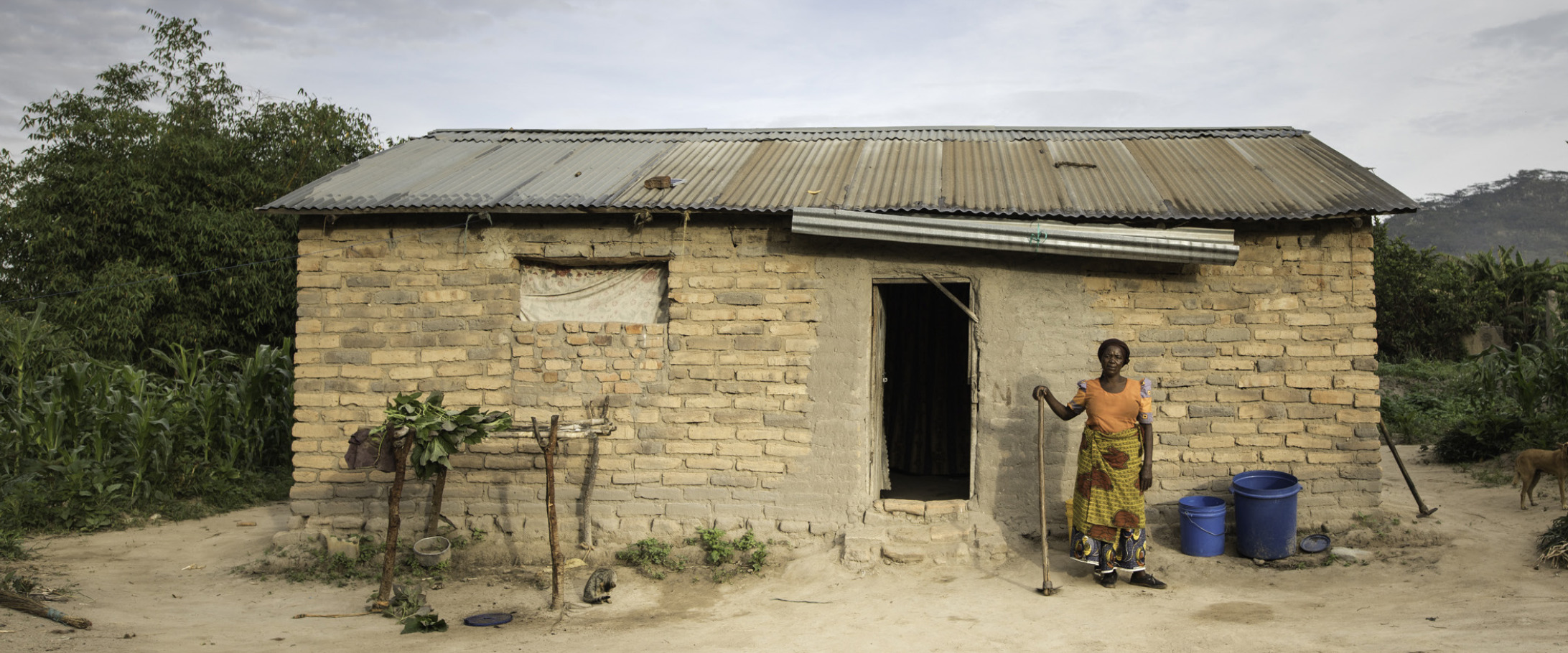[vc_row][vc_column width=”1/2″][vc_column_text]
CARE has been working in the Philippines since 1949, with extensive experience helping communities prepare for and respond to emergencies.
We work in areas that are geographically diverse but disaster-prone, including those areas affected by the 2013 Typhoon Haiyan.
In places like Panay and Samar, we’re focused on supporting affected communities over the long term. Our Livelihoods Assistance Programs, for example, provide small-scale grants and support to help communities return to work. We’re also supporting women’s groups, cooperatives and other community-based organisations, ensuring that our efforts directly improve the lives of those most vulnerable.[/vc_column_text][/vc_column][vc_column width=”1/2″][vc_column_text css=”.vc_custom_1482274587184{padding-top: 10px !important;padding-right: 20px !important;padding-bottom: 20px !important;padding-left: 20px !important;background-color: #eaeaea !important;}”]
Fast Facts
Population: 102.62 million (July 2016 est.)
Life expectancy: 69.2 years (65.7 years male, 72.9 years female) (2016 est.)
Infant mortality: 21.9 deaths/1,000 live births (2016 est.)
Under-5 mortality*: 28 deaths/1,000 live births (2015 est.)
Maternal mortality: 114 deaths/100,000 live births (2015 est.)
Adult literacy rate: 96.3% (95.8% male, 96.8% female) (2015 est.)
Access to improved drinking water: 91.8% (93.7% urban, 90.3% rural)
Access to improved sanitation: 73.9% (77.9% urban, 70.8% rural)
Labour force participation rate^: 80% male, 51% female (2014 est.)
Percentage of seats held by women in national parliament^: 30%
GDP per capita: $7,300 (2015 est.)
Source: CIA World Factbook, *UNICEF, ^World Bank[/vc_column_text][/vc_column][/vc_row][vc_row][vc_column width=”1/2″][vc_column_text]
Typhoon Haiyan: one of the strongest storms ever recorded
Typhoon Haiyan hit central Philippines on 8 November 2013, causing destruction on an extraordinary scale. The 600-kilometre-wide typhoon was one of the strongest storms ever recorded in the world. Around 16.1 million people were affected and more than 6,300 were killed. The typhoon damaged or destroyed 1.1 million homes, and 4.1 million people – the equivalent of the population of Melbourne – became homeless. Houses, schools, roads and livelihoods were wiped out. The typhoon caused $723 million in damage to crops, livestock, fisheries and agricultural infrastructure, and around 5.9 million workers lost their source of income.[/vc_column_text][vc_column_text]In the 12 critical months following Typhoon Haiyan, CARE and its local partners reached more than 318,000 people – 68,000 households – with lifesaving food, shelter and support to rebuild their lives. This work was made possible through the donations of thousands of generous Australians.[/vc_column_text][/vc_column][vc_column width=”1/2″][vc_single_image image=”30883″ img_size=”large” include_caption=”yes”][/vc_column][/vc_row][vc_row][vc_column][vc_row_inner][vc_column_inner width=”1/4″][vc_single_image image=”8038″ img_size=”full” alignment=”center”][vc_column_text]54,200 households received food packages
9,400 school children received emergency food[/vc_column_text][/vc_column_inner][vc_column_inner width=”1/4″ css=”.vc_custom_1418160803783{padding-top: 20px !important;}”][vc_single_image image=”8040″ img_size=”full” alignment=”center”][vc_column_text]13,900 households received emergency shelter materials[/vc_column_text][/vc_column_inner][vc_column_inner width=”1/4″][vc_single_image image=”8039″ img_size=”full” alignment=”center”][vc_column_text] 15,400 households received shelter repair kits to help them build back safer[/vc_column_text][/vc_column_inner][vc_column_inner width=”1/4″][vc_single_image image=”8035″ img_size=”full” alignment=”center”][vc_column_text] 27,000 households received a cash grant to help them restart their economic activities[/vc_column_text][/vc_column_inner][/vc_row_inner][/vc_column][/vc_row][vc_row][vc_column width=”1/2″][vc_single_image image=”30884″ img_size=”large” include_caption=”yes”][/vc_column][vc_column width=”1/2″][vc_column_text]
Climate-resilient livelihoods
CARE’s assisted community associations in Leyte are now practising organic farming and applying eco-friendly and innovative agricultural techniques in collaboration with the Department of Agriculture, Philrootcrops and Agricultural Training Institute. Farmers and commodity processors have set up demo farms for other partners to replicate good agricultural practices and learn about intercropping.
Farmers are also using solar dryers for their products, building structures according to “Build back safer” techniques and ensuring that their livelihoods don’t degrade the ecosystem.[/vc_column_text][/vc_column][/vc_row][vc_row][vc_column width=”1/2″][vc_column_text]
Age is not a hindrance to accessing opportunities
Imelda, a 64-year-old vegetable farmer in Lemery in Iloilo, has been farming since she was ten years old.
Imelda relies on her vegetable garden in her backyard – where she grows string beans, pumpkins, eggplants, taro, jackfruit, and okra – as her primary source of income. However, following Typhoon Haiyan, Imelda’s house was badly damaged, along with her garden.
“It was really difficult to get back on our feet because we literally lost everything.”
Imelda’s community became part of CARE’s Typhoon Haiyan Reconstruction Assistance project. With the support of the Government of Canada through the Global Affairs Canada, CARE provided financial assistance to farmers’ associations in Lemery to boost vegetable production. This has led to income-generating activities for small-scale farmers particularly women and the elderly.
“I am extremely happy taking part in CARE’s livelihood project in my community. We’ve learned so much from all the technical assistance provided to us.”
Imelda now spends most of her morning in her vegetable garden, and once a week she goes to a demo farm that CARE has helped establish. She regularly harvests vegetables that she sells in different markets in Lemery and nearby towns.
“I am thankful that I have a stable livelihood now.”[/vc_column_text][/vc_column][vc_column width=”1/2″][vc_single_image image=”30887″ img_size=”large” include_caption=”yes”][/vc_column][/vc_row][vc_row][vc_column width=”1/2″][vc_column_text]
Donate now
Support our ongoing work to create a more equal world.
Your donation can help end extreme poverty and give people the means to build a better future for themselves in countries like the Philippines.
For those living in extreme poverty, your support brings education and training, healthcare and clean water, nutritious food, and new ways to earn an income. And in times of crisis, you help us deliver emergency relief.[/vc_column_text][/vc_column][vc_column width=”1/2″][vc_column_text]
[care_donation_form one_off_fund_code=”YDGGEN” one_off_appeal_code=”YDGCtryOnl” monthly_fund_code=”YDGIAP” monthly_appeal_code=”YDGIAP” donation_title=”Donate Now” donation_subtitle=”Your ${donation_amount} will go a long way” dollar_handles=”50|150|Other” monthly_dollar_handles=”30|50|Other” default_gift_type=”one_off” hide_phone_field=”no” tandc_link=”https://dev.care.org.au/direct-debit/” tandc_text=”View CARE Australia’s Direct Debit Service Agreement” /]
[/vc_column_text][/vc_column][/vc_row][vc_row][vc_column][care_linkeddocuments numberposts=”4″ maintitle=”Other resources and highlights”][/vc_column][/vc_row]
